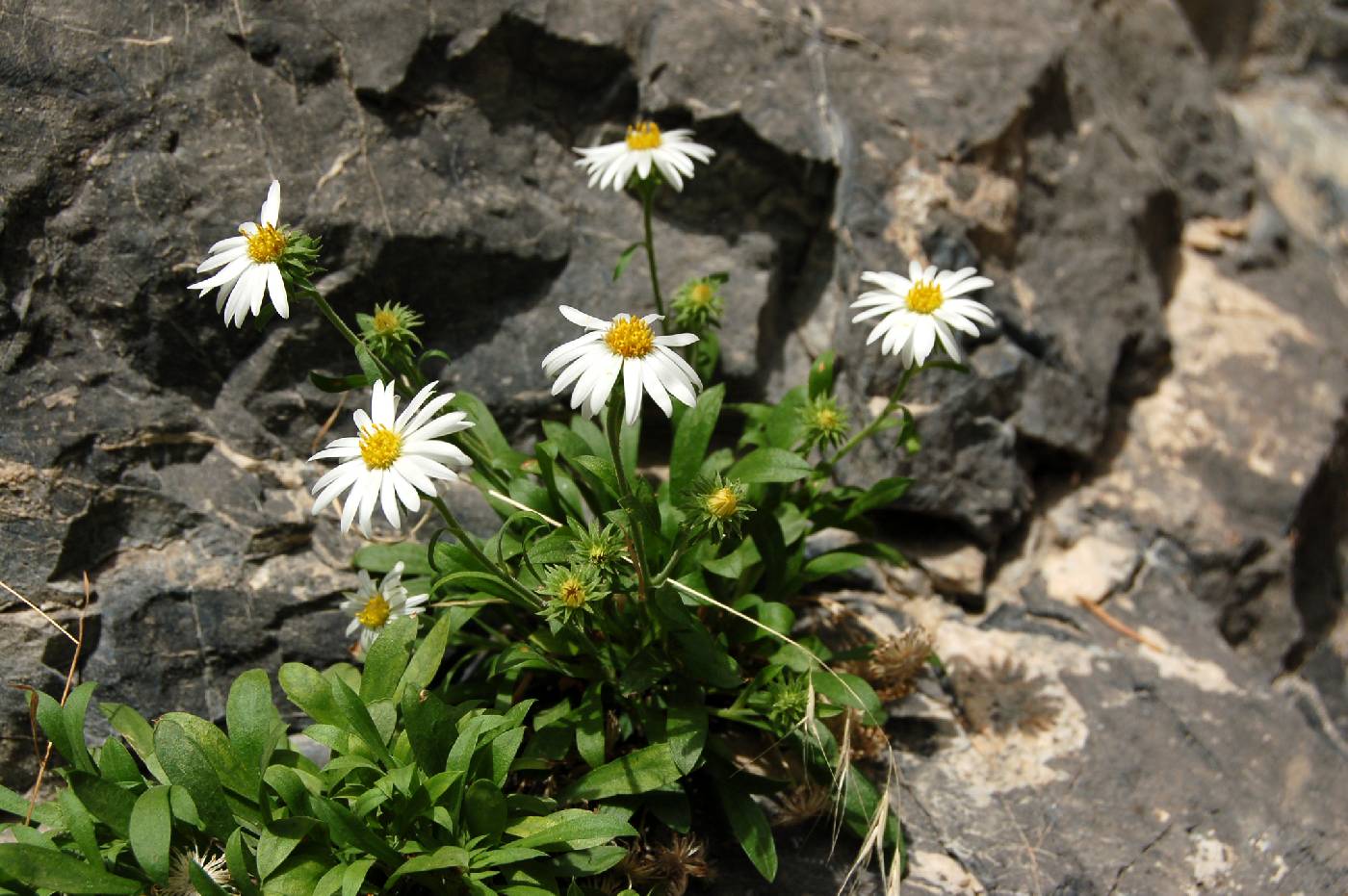Eurybia
|
Family: Asteraceae |
Perennials, 10-120 cm (rhizomes long and slender to short and thick, sometimes cormoid, often becoming woody). Stems ascending to erect, usually simple, rarely branched proximally, glabrous or ± densely hairy, usually eglandular, sometimes stipitate-glandular. Leaves basal and cauline; alternate; sessile or petiolate; blades cordate, ovate, obovate, elliptic, or oblong to spatulate, oblanceolate, or lanceolate, usually gradually reduced distally, margins entire or serrate, sometimes spinulose-serrate, faces glabrate to hairy, usually eglandular, sometimes stipitate-glandular. Heads radiate, usually in corymbiform arrays, rarely borne singly. Involucres cylindro-campanulate to broadly campanulate, (4-14(-16) ×) 4-25+ mm. Phyllaries 20-140 in 3-7 series, 1-nerved (usually rounded adaxially, sometimes low-keeled), broadly ovate or oblong to oblanceolate, lanceolate, or linear, unequal, bases indurate (rarely wholly foliaceous), margins narrowly scarious (seldom herbaceous), often ciliolate (green zones ± basally truncate, in distal 1 / 3 - 3 / 4 of phyllary (outer) to less than 1 / 6 and only along midnerves (inner), apices obtuse to acute, faces glabrous, ± strigillose, puberulent, scabrellous, strigoso-villous, or villous, sometimes ± stipitate-glandular. Receptacles flat to slightly convex, pitted, epaleate. Ray florets 5-60, pistillate, fertile; corollas white to purple (coiling at maturity). Disc florets 8-260, bisexual, fertile; corollas yellow, becoming purple at maturity, barely to abruptly ampliate, tubes shorter to longer than funnelform to campanulate throats, lobes 5, usually erect to spreading, sometimes ± reflexed, deltate, triangular, or lanceolate; style-branch appendages lanceolate. Cypselae cylindro-obconic to fusiform, ± compressed, 7-12(-18)-nerved, faces glabrous or sparsely to densely strigillose, eglandular; pappi persistent, of 35-70+, reddish, orange, cinnamon, tawny, tan, yellowish, or pinkish, unequal, soft to stiff, barbellate or barbellulate, often apically ± clavate bristles in 2-4 series. x = 9. Eurybia traditionally has been treated within Aster in a broad sense. G. L. Nesom (1994b), in his review of North American asters, showed that Aster in a broad sense does not form a natural group and proposed splitting it into several genera, among which Eurybia is one. In his treatment, Nesom included Herrickia within Eurybia, as sect. Herrickia in subg. Eurybia. Such views were generally supported in molecular phylogenetic studies (J. C. Semple et al. 2002). L. Brouillet et al. (2004) showed, however, that Oreostemma, Herrickia, Eurybia, and Triniteurybia form a grade at the base of the Machaerantherinae and that Herrickia and Eurybia are distinct. The subgenera and sections proposed by G. L. Nesom (1994b), based on anterior taxonomy, could not be confirmed in the molecular studies cited above. I chose not to use subgeneric limits as proposed by Nesom because they may not reflect actual relationships. For instance, there is a clear gradation between members of sect. Calliastrum (Torrey & A. Gray) G. L. Nesom (subg. Eurybia) and sect. Heleastrum (de Candolle) G. L. Nesom. Also, I do not recognize sect. Eryngiifoliae (Alexander) G. L. Nesom distinct from sect. Heleastrum, as there is no clear demarcation between the two as currently defined. Finally, sect. Radulini (Rydberg) G. L. Nesom appears artificial to me, but currently there is no good way to reassign its species. The Eurybia radulina complex of western North America clearly constitute a group, but it is unclear whether the western E. conspicua or the eastern E. radula and E. saxicastelli are close to them. Members of other sections may have played a role in the reticulate evolution of sect. Eurybia, even though it is well marked by its cordate leaves and disc florets with long tubes and short, campanulate corollas. Therefore, species are described below in a rough taxonomic order, with diploids listed before polyploids of the same group.
|

